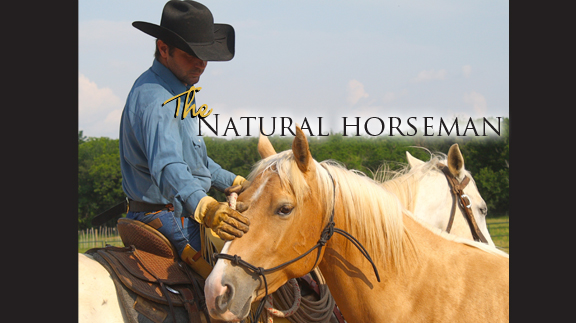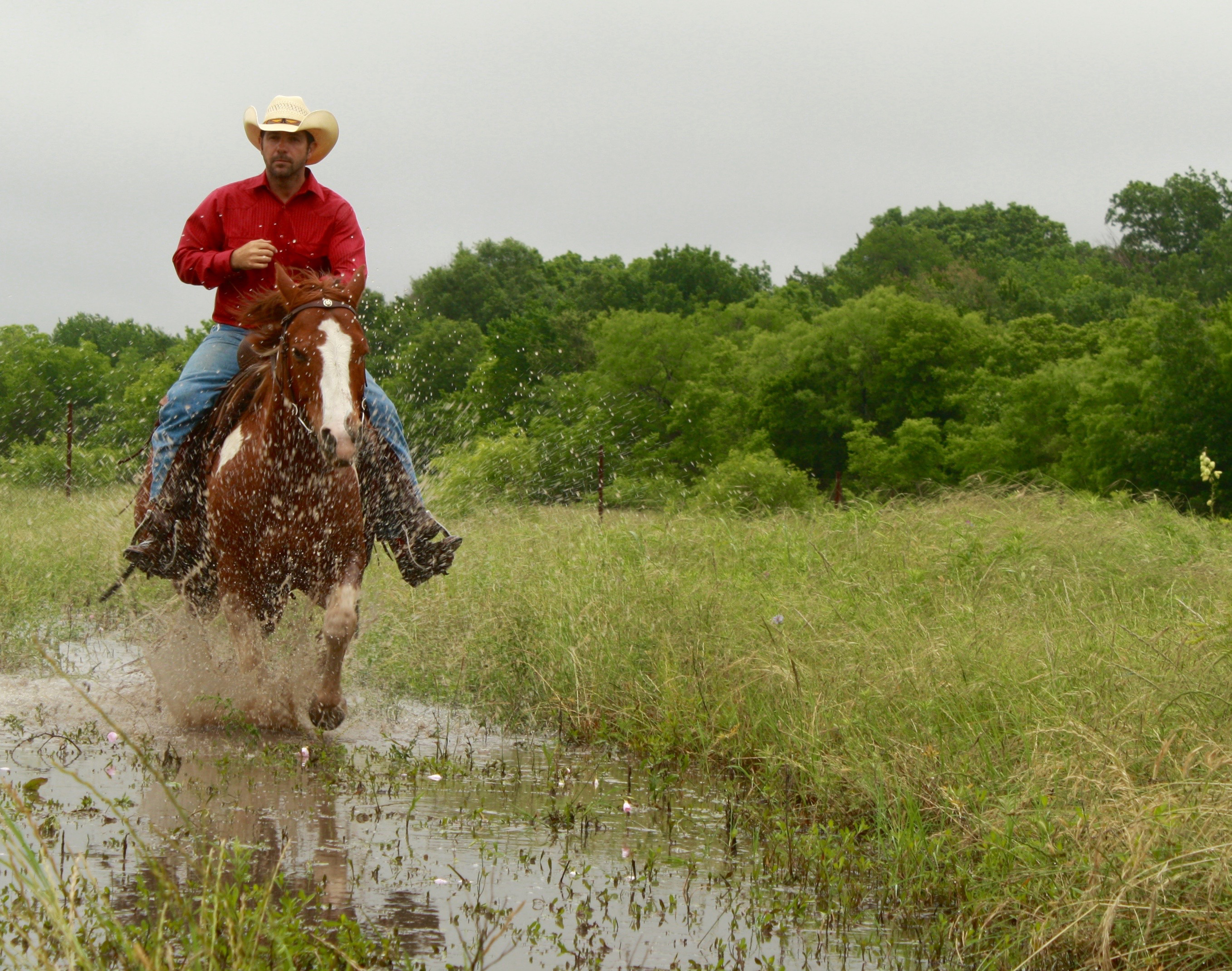HOME
The Natural Horseman – Riding Through the Mud

By Steve Stevens
The Texas Ranger has a handlebar mustache and lines running across his face showing every haunting experience in his life. Every outlaw chased shows through each nook and cranny of his tanned leather skin. His steel eyes gleam through the caked dust blown up from a line of storms starting in the Hill Country working their way east. Although the storms are bringing torrential rain, he never wavers in his quest to hunt down the Comanches who just raided a small town. As the rain thickens and the lightning crashes, he finds himself and his stout bay gelding at a full out run through the black clay landscape. His faithful mount hammers on through the pounding gust of sleet waiting for his next command. The Ranger rides light in his saddle to stay loose on his back in case of a trip or fall. The many miles have taught him how to be aware of his horse’s footfall in the most difficult of situations and how to help his gelding prevail through every slick unbalanced stride that he takes in the Texas mud.
I know it seems far-fetched, but I think often of our Western heritage and what it might have been like back then and what man and his partner the horse endured, especially this time of year when we seem to be back in a rain pattern that could potentially drop rain weekly through the rest of fall and winter.
We don’t have the benefit of an indoor arena, so finding safe, proactive ways to work horses in training when the ground is wet can take some getting used to. This is especially true when riding colts and problem horses that aren’t sure footed yet. Long term, it is a great opportunity to build a horse’s confidence in sticky situations, excuse the pun. But you really have to use your awareness. A lot of the property here is a clay mixture and it can be like walking on ice, so it is a great time to really focus on footfall. Not being paranoid, but staying in the moment—feeling each step fall deep and sturdy in the ground. If you are not connected to your horse and balanced on this kind of ground, you can impede his ability to stay on his feet very easily.
Lots of times we don’t have control of our environment: weather on the trail, a freak storm that comes up, entered at the rodeo that is never canceled due to rain, or just needing to get some colts trained in the mud. It is not necessarily something I enjoy doing, but riding in the mud is a reality. It is good to get horses used to all environments, within reason.
If you haven’t ridden in the mud before, the important thing is to be aware of the footing or should I say the ground. If there is good footing under the mud there will still be solid ground underneath your horse, and as long as you are aware and pay attention to things, it will be fine. If you have to ride through slicker stuff, you really need to take your time by focusing on each step and staying balanced and light in the saddle.
So next time you are stuck riding in the mud, think about those before us who discovered our beautiful country horseback and all the millions of miles they rode through the mud!
Farm & Ranch
Acorn Toxicity

By Barry Whitworth, DVM, MPH
With the prolonged drought, most pastures in Oklahoma end up in poor condition. With the lack of available forage, animals may go in search of alternative foods.
If oak trees are in the pastures, acorns may be a favorite meal for some livestock in the fall. This may result in oak poisoning.
Oak leaves, twigs, buds, and acorns may be toxic to some animals when consumed.
To read more, pick up a copy of the November edition of North Texas Farm & Ranch magazine, available digitally and in print. To subscribe by mail, call 940-872-5922.

Farm & Ranch
Silver Bluestems

By: Tony Dean
There are a handful of grasses on North Texas grazing lands ranchers need to know, not because they are highly desirable, but rather because they are not of much value. I call them “decom” plants, which is am acronym for “Don’t Ever Count On Me.” Silver bluestem is a “decom” grass.
Silver bluestem is a perennial which grows in all areas of Texas. It can survive in almost all soil types, and in full sun conditions or in semi shade. It grows up to three feet tall and is easily recognized with the presence of the white fuzzy seed head. Also, one of the identifying characteristics of Silver bluestem is a bend in the stems at each node, causing the plants to take on a rounded shape as they mature.
To read more, pick up a copy of the November edition of North Texas Farm & Ranch magazine, available digitally and in print. To subscribe by mail, call 940-872-5922.

Farm & Ranch
Meanwhile Back At The Ranch

By: Rayford Pullen
Fall is here which means winter is closing in on us and before we officially get into winter, we need to make sure our factories are either producing or will be producing in a few months.
We have been pregnancy testing our cows this fall and if they are not bred or nursing a calf, we are bidding them adios. With annual costs somewhere between $900.00 and $1,000.00 per cow, those cows not producing a live weaned calf are costing us quite a bit.
To read more, pick up a copy of the November edition of North Texas Farm & Ranch magazine, available digitally and in print. To subscribe by mail, call 940-872-5922.
-

 Country Lifestyles2 years ago
Country Lifestyles2 years agoScott & Stacey Schumacher: A Growth Mindset
-

 Country Lifestyles8 years ago
Country Lifestyles8 years agoStyle Your Profile – What your style cowboy hat says about you and new trends in 2017
-

 HOME8 years ago
HOME8 years agoGrazing North Texas – Wilman Lovegrass
-

 Equine1 year ago
Equine1 year agoThe Will to Win
-

 Country Lifestyles5 years ago
Country Lifestyles5 years agoAmber Crawford, Breakaway Roper
-

 Outdoor9 years ago
Outdoor9 years agoButtercup or Primrose?
-

 Country Lifestyles8 years ago
Country Lifestyles8 years agoJune 2016 Profile – The man behind the mic: Bob Tallman
-

 Country Lifestyles8 years ago
Country Lifestyles8 years agoDecember 2016 Profile, Rusty Riddle – The Riddle Way





